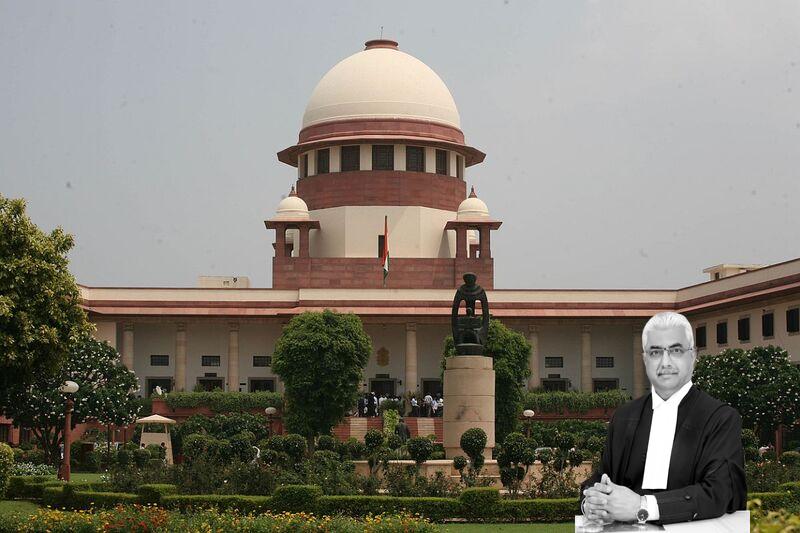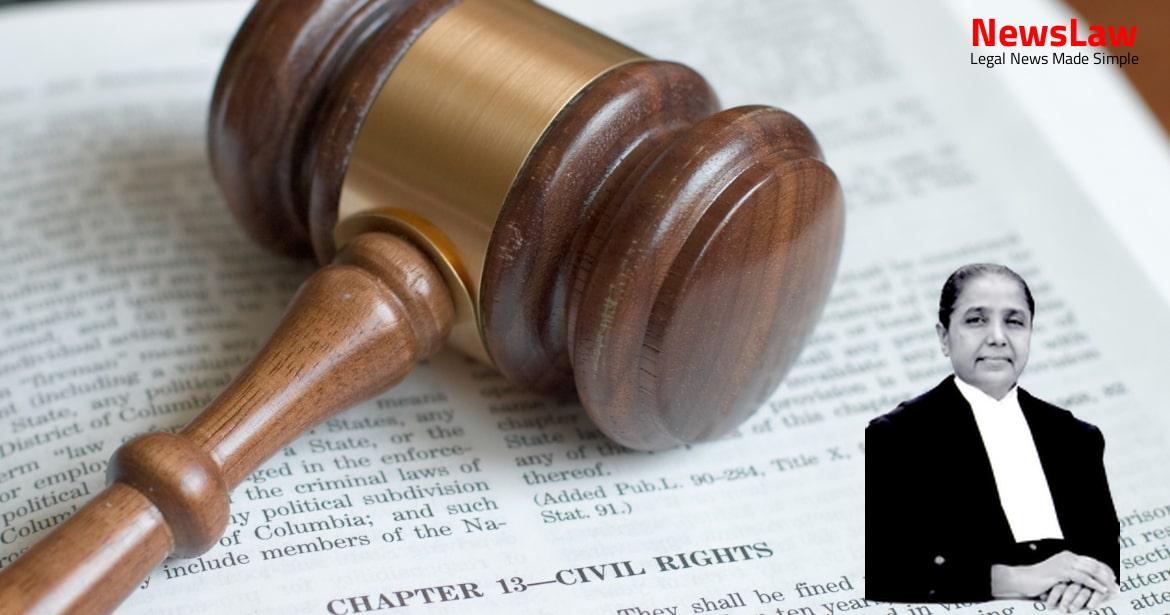The lease in respect of Survey No 291 was specifically executed for cultivation of sugarcane crop, whereas the lease for Survey No.290/1 & 290/2 were for cultivation, generally. Since the tenant did not voluntarily relinquish his possession in response to the notice, the landlord initiated proceedings for Tenancy Case No 2/1977 3 resumption of tenanted lands before the Court of Tenancy Awal Karkun, Rahuri (hereinafter referred to as ‘ original authority’ ) under Section 29 read with Section 43A(1)(b) of the Bombay Tenancy and Agricultural Lands Act, 1948. Yes, landlord has proved that he requires land for bonafide personal cultivation The Act has since been renamed as the Maharashtra Tenancy and Agricultural Lands Act, 1948 by Maharashtra Act 24 of 2012 4 5. The direction for restoration of 22 acres of the suit land was on the premise that the applicant (landlord) was ‘ entitled for possession of so much of land as would result in both the landlord and tenants holding thereafter in the total and equal area for personal cultivation’. Both the landlord and the tenant preferred appeals against the order of the original authority. Against the decision of the appellate authority, the landlord and the tenant filed revision applications before Member of the Maharashtra Revenue Tribunal, Pune (for short, the ‘revisional authority’). Upon examination of the contentions urged by both the sides, the revisional authority allowed the application filed on behalf of the tenant, dismissed the application of the landlord and accordingly, ordered that the case be remanded to the original authority ‘ for framing Revision No.3/79 7 issues under the provisions of Section 31A to 31D of the Tenancy Act, 1948 in respect of Survey No 291 only’. It was also noticed that the outcome of the dispute was directly linked to the question of the relevant notification applicable, that is, whether the original notification or the amended notification governed the facts in issue, and therefore, a clear finding on that question was most expedient. So it was directed that the original authority shall consider the matter afresh and examine if the heirs of the landlord had any bonafide requirement for personal cultivation in light of the changed circumstances (death of landlord). In that context, the revisional authority went beyond 10 its jurisdictional boundaries in disturbing the said finding and holding that the landlord’s holding exceeds one unit of economic holding. • The High Court and the revisional authority were justified in remanding the case to the original authority since the facts necessary to decide whether the landlord’s holding was in excess of one unit of economic holding, was not forthcoming from the evidence on record. In fact, we have perused the original records and the original notice dated 05.09.1975 and are satisfied that termination notice has been issued only in respect of Survey No.291 and there is not even a whisper with regard to Survey No.290/1 & 290/2 in the notice dated 05.09.1975. It would be of benefit to consider the notification issued by the State Government in exercise of powers under Section 43A (3) on 14.02.1958 and the amendment brought out to this notification on 08.10.1969 which has been relied upon by the appellant and which has a direct bearing on the issue. 31-A, 31-B, 31-C and 31-D be terminated by the lessor by giving the lessee [a month’s] notice in writing stating therein the reasons for the termination of the lease: [Provided that, if the holding of lessor does not exceed one economic holding and such lessor earns his livelihood principally by agriculture or by agricultural labour, the conditions mentioned in sec. of 1.10.1969.” Relevant provisions of Tenancy Act, 1948 “Section 2(2D) – “ceiling area” means in relation to land held by a person whether as an owner or tenant or partly as owner and partly as tenant the area of land fixed as ceiling area under section 5 or 7; Section 2(6A) – “economic holding” means in relation to land held by a person, whether as an owner or tenant, or partly as owner and partly as tenant, the area of land fixed as an economic holding in section 6 or 7; 14 Section 5 – Ceiling area (1) For the purposes of this Act, the ceiling area of lands shall be,–– (a) 48 acres of jirayat land, or (b) 24 acres of seasonally irrigated land or paddy or rice land, or (c) 12 acres of perennially irrigated land. (1) Where the land held by a person consists of two or more kinds of land specified in sub-section (1), the ceiling area of such holding shall be determined on the basis of one acre of perennially irrigated land being equal to two acres of seasonally irrigated land or paddy or rice land, or four acres of jirayat land. (1) The notice required to be given under sub-section (1) shall be in writing, shall state the purpose for which the 15 landlord requires the land and shall be served on the tenant on or before the 31st day of December 1956.
(2) Where a landlord is a minor, or a widow, or a person subject to mental or physical disability then such notice may be given and an application for possession under section 29 may be made,–– (i) by the minor within one year from the date on which he attains majority; (ii) by the succesor-in-title of a widow within one year from the date on which her interest in the land ceases to exist; (iii) within one year from the date on which mental or physical disability ceases to exist; and Provided that where a person of such category is a member of a joint family, the provisions of this sub-section shall not apply if at least one member of the joint family is outside the categories mentioned in the sub-section unless before the 31st day of March 1958 the share of such person in the joint family has been separated by metes and bounds and the Mamlatdar on inquiry, is satisfied that the share of such person in the land is separated having regard to the area, assessment, classification and value of the land, in the same proportion as the share of that person in the entire joint family property, and not in a large proportion. Section 31A – Conditions of termination of tenancy The right of a landlord to terminate a tenancy for cultivating the land personally under section 31 shall be subject to the following conditions :–– (a) If the landlord at the date on which the notice is given and on the date on which it expires has no other land of his own or has not been cultivating personally any other land, he shall be entitled to take possession of the land leased to the extent of a ceiling area. LXII of 1947 or if tenant is member of co- orperative farming society In no case a tenancy shall be terminated under section 31–– (1) in such manner as will result in leaving with a tenant, after termination, less than half the area of the land leased to him, or (2) in such a manner as will result in a contravention of the provisions of the Bombay Prevention of Fragmentation and Consolidation of Holdings Act, 1947, or in making any part of the land leased a fragment within the meaning of that Act, or co-operative farming society.
Section 33B – Special rights of certificated landlord to terminate tenancy for personal cultivation 17 (1) xxx (2) xxx (3) xxx (4) xxx (5) The right of a certificated landlord to terminate a tenancy under this section shall be subject to the following conditions, that is to say,–– (a) If any land is left over from a tenancy in respect of which other land has already been resumed by the landlord or his predecessor-in-title, on the ground that other land was required for cultivating it personally under section 31 (or under any earlier law relating to tenancies then in force), the tenancy in respect of any land so left over shall not be liable to be terminated under sub-section (1). (c) The land leased stands in the Record of Rights (or in any public record or similar revenue record) on the 1st day of January 1952 and thereafter until the commencement date in the name of the landlord himself, of any of his ancestors (but not of any person from whom title is derived by assignment or Court sale or otherwise), or if the landlord is a member of a joint family, in the name of a member of such family. (6) xxx (7) xxx Section 43A – Some of the provisions not to apply to leases of land obtained by industrial or commercial undertakings, certain co-operative societies or for cultivations of sugar- cane or fruits or flowers 18 (1) The provisions of sections 4B, 8, 9, 9A, 9B, 9C, 10, 10A, 14, 16, 17, 17A, 17B, 18, 27, 31 to 31D (both inclusive), 32 to 32R, (both inclusive) [33A, 33B, 33C] 43, 63, 63A, 64 and 65, shall not apply to–– (a) land leased to or held by any industrial or commercial undertaking (other than a Co-operative Society) which in the opinion of the State Government bona fide carried on any industrial or commercial operations and which is approved by the State Government; (b) leases of land granted to any bodies or persons other than those mentioned in clause (a) for the cultivation of sugarcane or the growing of fruits or flowers or for the breeding of livestock; (c) to lands held or leased by such co-operative societies as are approved in the prescribed manner by the State Government which have for their objects the improvement of Clause (b) of sub-Section (1) of Section 43A would indicate that lease of land granted for the cultivation of sugarcane would result in the exemption of the provisions indicated in sub-Section (1) of Section 43A. Therefore, it is crucial for us to examine the notification dated 14.02.1958 as amended on 08.10.1969, which came to be issued by the State Government under the enabling source of power provided in Section 43A(3). The definition of ‘economic holding’ in Section 2(6A) requires us to account for the total land held by a person, whether as an owner or tenant. Therefore, it would not be incorrect to say that the Act and Code are in pari materia to each other, and therefore, we proceed to import the definition of ‘to hold land’ from the Code and import it for the purpose of interpreting the phrase, ‘economic holding’ in the Act. Further, no evidence has been led to contradict the fact that the landlord holds land as an owner, in excess of 13 acres of jirayat land. According to Section 33(B)(5)(b), the landlord’s entitlement to terminate tenancy and recover possession of land leased is only to the extent ‘ of so much thereof as would result in both the landlord and the tenant holding thereafter in the total an equal area for personal cultivation’.
In deciding the extent of land to be restored, the original authority has applied the provision contained in Section 33(B)(5)(b), whereas the appellate authority has applied the provision contained in Section 31B. The tenant may hold land for personal cultivation from three sources: (a) land which he himself owns; (b) land which is let out to him by his landlord or (c) land which is let out to him by another landlord or another certificated landlord. Thus tenant B will have 2 acres of leased land plus 4 acres of his own; tenant C the same and tenant D only two acres of the leased land. Thus, the landlord will be entitled to get back 5 acres out of the land leased while tenants B and C will have left 4 acres each and tenant D only one acre. If the total land leased as a whole and the total land in the possession of the joint tenants is taken into account without the notional division which we have suggested then the total land in the possession of the joint tenants would be 6 acres of leased land plus 8 acres of their own and if the landlord is held to be entitled to resume on the basis of the total land thus held he would resume the whole six acres leased by him but in that event the tenant D would be left entirely without any land. The tenant in Survey No.290/1 & 290/2 was one, Mr. 27 (In Acres) A B C E Name Land leased under registered lease deed Dated 30/08/1962 (total extent 26 Acres 13 Guntas) Notional Share as per Chunnilal Bhailal Wani case Land owned by Tenant (As per revenue records available at page No.241(A) and 261(A) ) Land owned by Landlord (Keshav Bhaurao Yeole) Land to be allowed to Landlord out of the Leased out portion Muralidhar Damodar Modhave 13.06 11.21 13.11 5.28 Bhausaheb Damodar Modhave 13.06 6.17 13.11 3.06 Total Leased out land which is to be restored to landlord 8.34 Method of calculation as per the Full Bench Judgment in Chunnilal Bhailal Wani Case (supra): A+B+C = X/2 = Y-C = E • Murlidhar Damodar Modhave: 13.06+11.21+13.11 = 37.382 = 18.39 – 13.11 = 5.28 28 • Bhausaheb Damodar Modhave: 13.06+6.17+13.11 = 32.342 = 16.17 – 13.11



